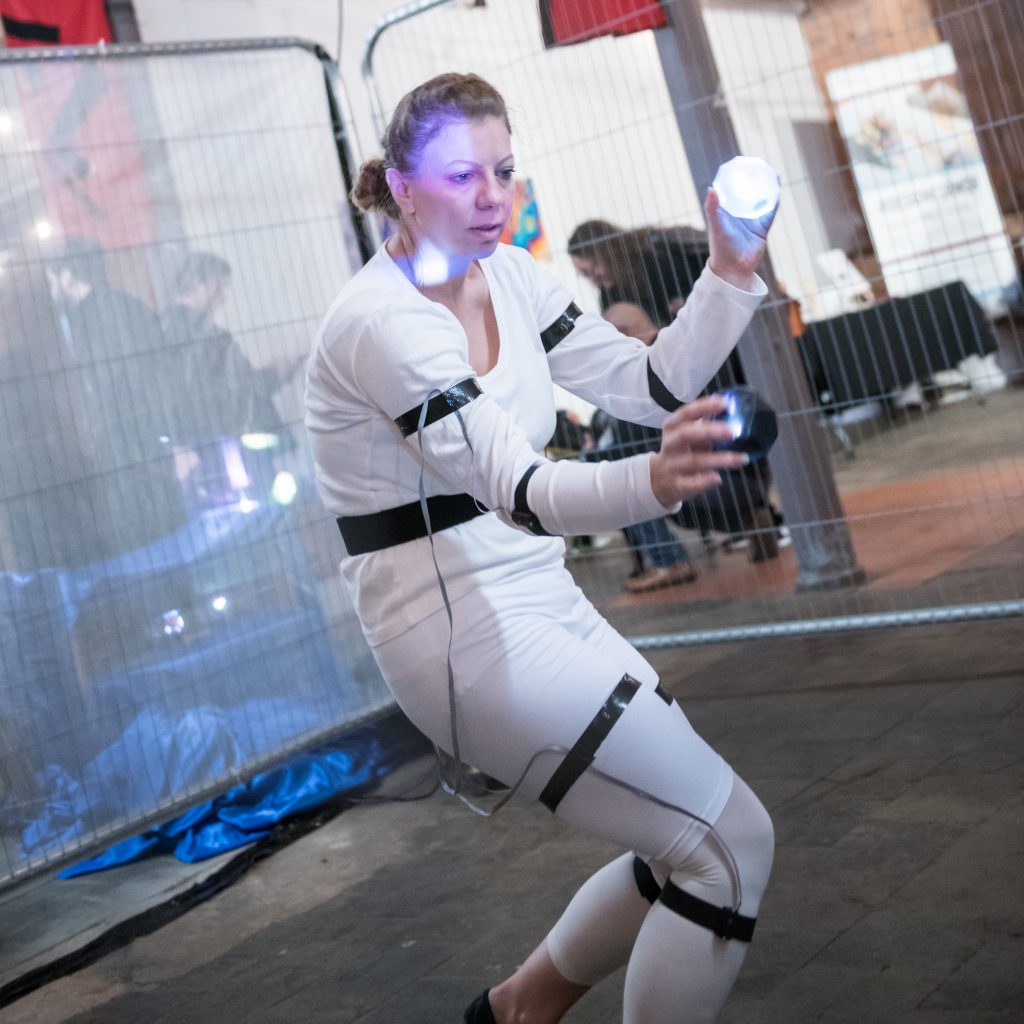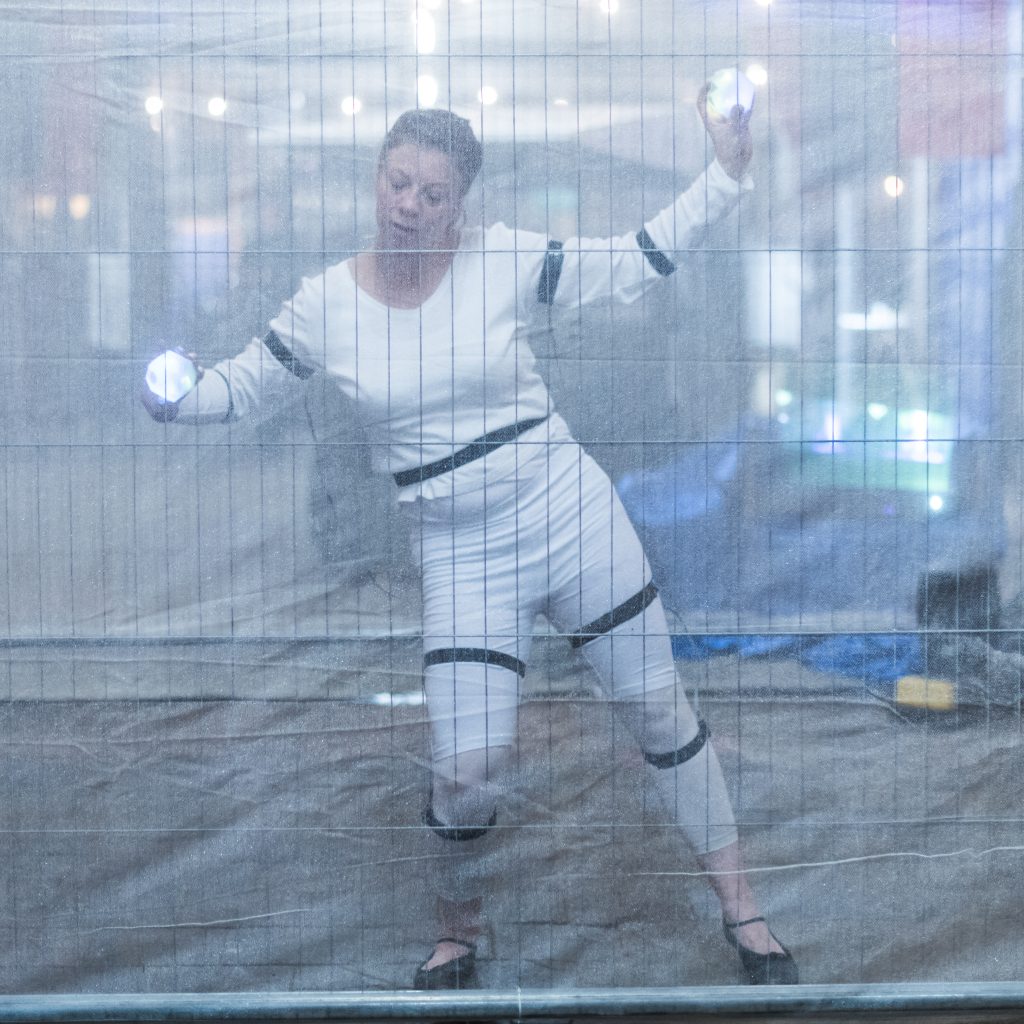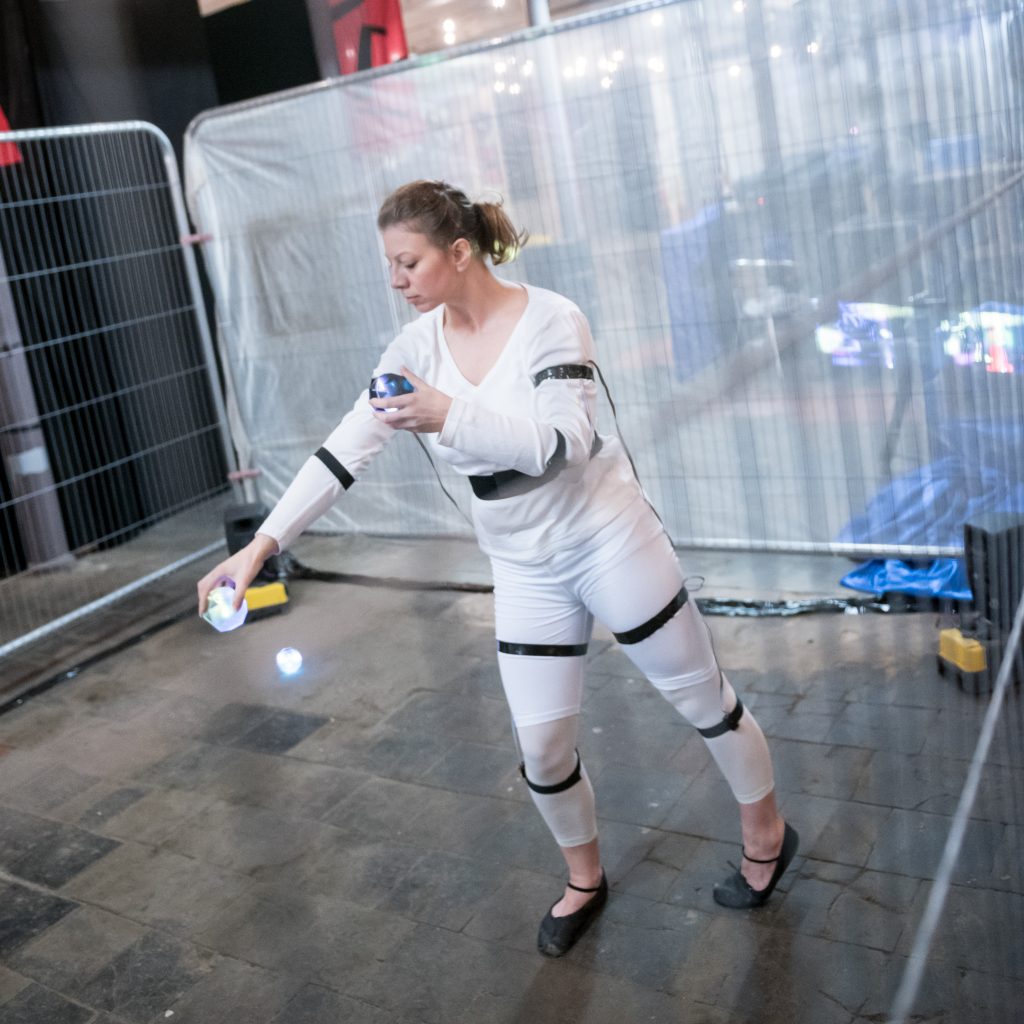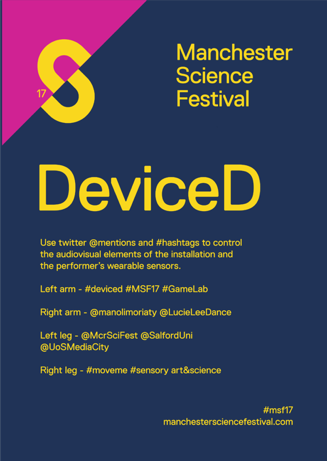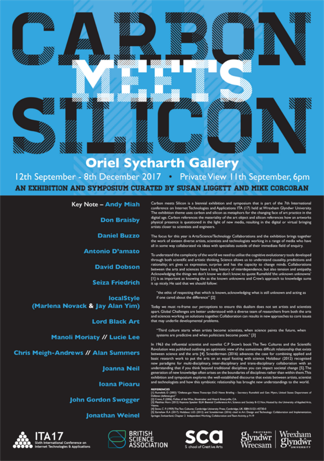-
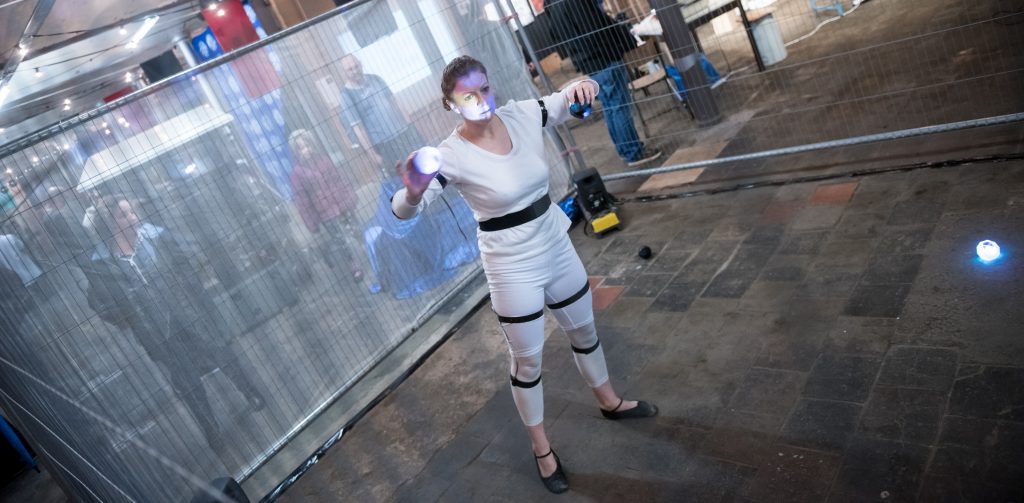
Lucie Lee performing at A Grand Exposition, all photos by Nick Harrison
DeviceD is a dancer-activated audio-visual installation informed by social media interactions, their influence on users, and the relationship between private and public identity. Comprised of wireless motion sensors and a wearable tactile feedback system, the dancer acts as the intermediary force, receiving social media posts as somatosensory stimuli, and transmits gestural data generating and manipulating the sonic and visual material.
Four fences demark an area signifying the user’s private domain, detached from what is expressed with every tweet, instagram post, or facebook update, with the digitally generated sounds and visuals emanating from within the private towards the observing public. Entering the private, the dancer performs an improvisatory choreography inspired by the surrounding sound and visuals, with the option of manipulating the emanating material through four handheld motion sensors. The audio-visual system constantly listens for specific mentions, hashtags, and search queries, arranged over four categories. Positive results for each category trigger new audio-visual events, as well as generating a pattern of tactile feedback on the wearable sensors attached on each limb of the dancer. Each pattern relates to a predetermined choreographic sequence, which the dancer identifies and performs until the end the somatosensory stimuli, before returning to improvisation.
DeviceD investigates the determinacy and expectation of the public in the era of instantaneous yet brief communications. The majority of the social media triggers ‘felt’ by the dancer will be delivered inadvertently, without the sender appreciating the ways their words affect others. The few bystanders witnessing the dancer’s interpretation of social media activity are met with three choices; join in and purposely control the choreography, stand back and observe how others affect the dancer, or move away and persist with their previous inadvertent influence.
Technology
-

inside the early prototype of the tactile feedback wearable system -

somatosensory feedback system, central unit (right) and wearable sensors (left
-
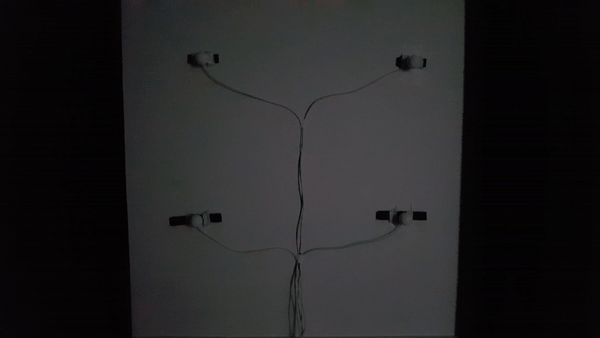
static demo of wearable visual/tactile feedback system -
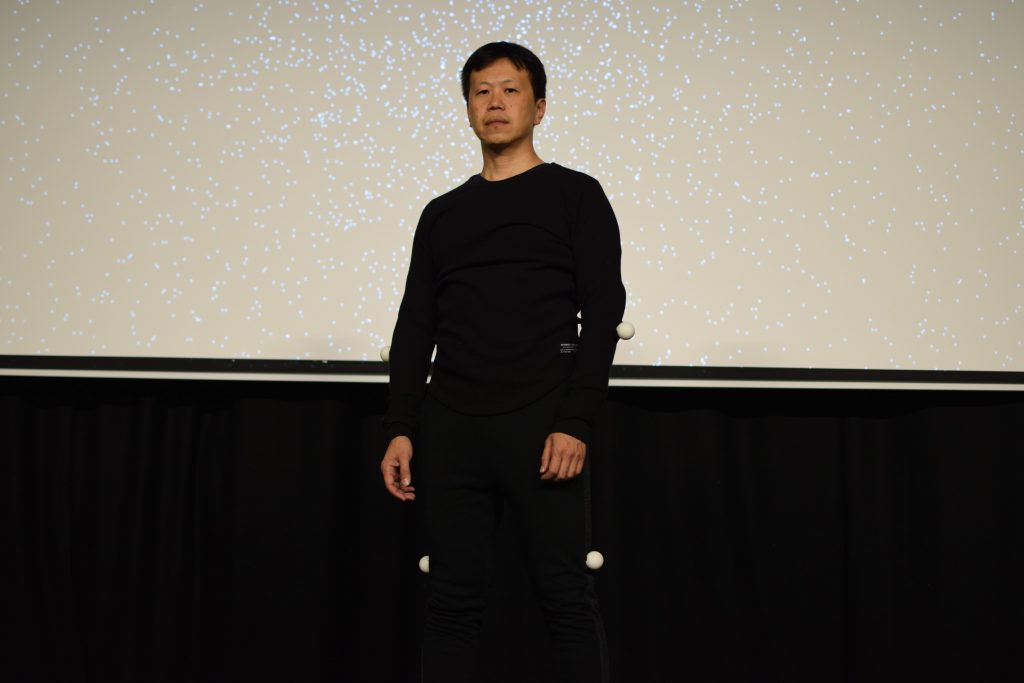
Joseph Lau with wearable system
-
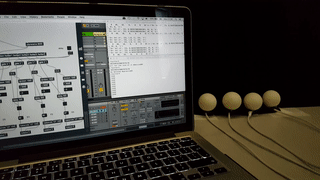
twitter posts triggering sensors through Python and Max applications -
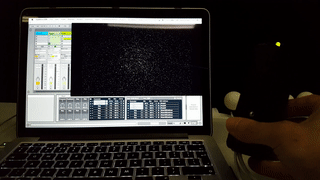
central unit controlling visuals through embedded Inertia Measurement Unit
Personnel
DeviceD was developed by an interdisciplinary team of artists and technologists.Performed by contemporary dancer Lucie Lee, her movement was designed alongside choreographer Joseph Lau. As well as dancing, Lucie Lee created the visuals in Isadora, which react to the soundscapes composed by Manoli Moriaty, who also designed the interactive interface and implemented the tactile pattern generators in Ableton Live. The software used to search social media posts was written in Python by programmer Barry Carter, also responsible for constructing the wearable somatosensory feedback system out of mobile phone vibrating pagers connected to an Arduino Teensy. Musician and programmer Adam Hart completed the system by devising a Max/MSP system translating the search results into Open Sound Control data.
Support
DeviceD was the result of a series of commissions by Glyndwr University, the Manchester Science Festival, and the arts & technology collective Cornbrook Creative, with funding granted by the British Science Association, the University of Salford, and Arts Council England. The work premiered in September 2017 during the Carbon Meets Silicon symposium at Oriel Sycharth Gallery, Wrexham. This was followed by a presentation during the 2017 edition of the Manchester Science Festival at MediaCityUK, Salford, and a further installation at A Grand Exposition, curated by Cornbrook Creative at Talbot Mill, Manchester.
